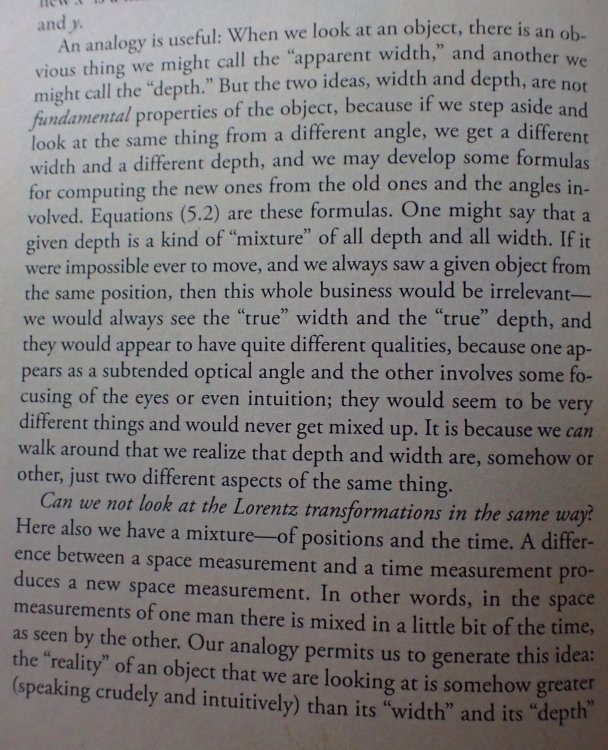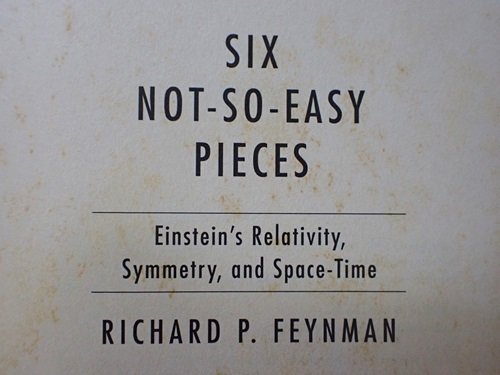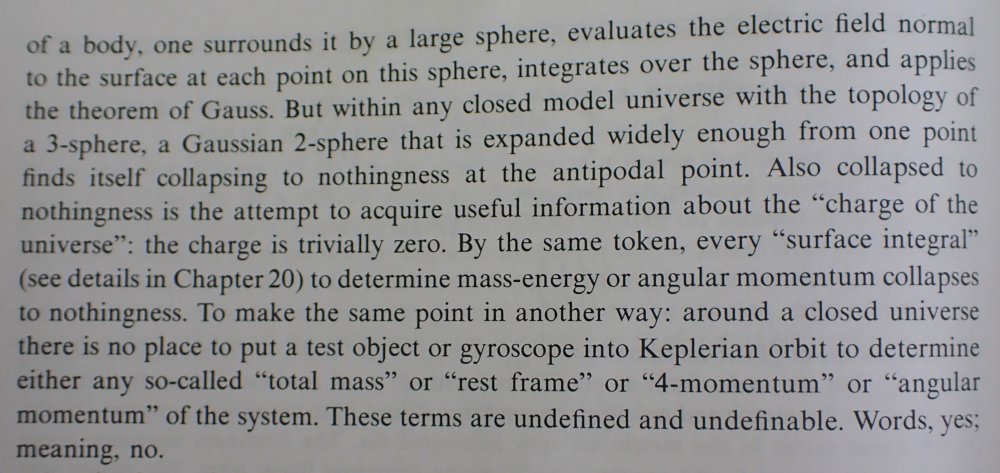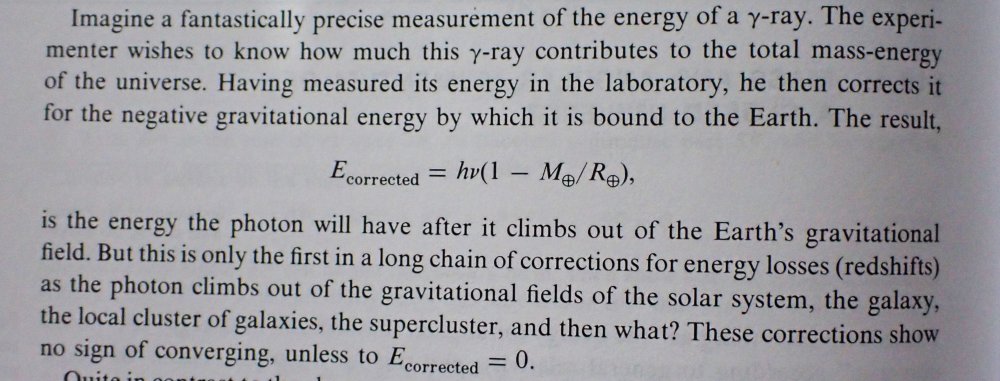

Genady
-
Posts
5177 -
Joined
-
Days Won
52
Content Type
Profiles
Forums
Events
Posts posted by Genady
-
-
5 minutes ago, sethoflagos said:
Hence, presuming the technology was available to detect CMBR radiation as the age of the universe tended towards infinity would not the source of that radiation tend towards being infinitely distant?
Yes, but this is not how the age of the universe is defined. In the definition of the age of the universe peculiar motion of the observers is removed. The cosmological time is the time of co-moving observers, i.e., observers for whom the CMBR is isotropic. All these observers find the age of the universe being the same (~13.8 billion years).
0 -
18 minutes ago, sethoflagos said:
Substitute axis/axes with interval/intervals. Are we good now?
No. Timelike intervals in SR are timelike in ALL inertial frames of reference. And spacelike stay spacelike as well.
0 -
5 minutes ago, sethoflagos said:
Yes - and each observer has their own world line which is typically rotated from the other's point of view according to their relative velocities such that the proper time interval of one is seen at least in part as part of the space interval of the other. Does that help?
I'm sort of uncomfortable trying to explain the mechanics of coordinate transformation to a mathematician 🤨
Right, no need to do this.
We can transform from one coordinate system to another. Such transformations transform coordinates of events. Axes do not transform. That's why I don't understand the meaning of
1 hour ago, sethoflagos said:our time axis is transformed into the spatial axes of their local coordinate system
0 -
8 minutes ago, sethoflagos said:
far distant observers for whom our time axis is transformed into the spatial axes of their local coordinate system
Unfortunately, I don't understand what you mean here. (Each observer has their own proper time.)
0 -
1 hour ago, Airbrush said:
If you had to bet on only one or the other ...
... I'd toss a coin.
0 -
8 hours ago, Markus Hanke said:Quote
The standard time-dilation effect for a clock at some distance from a black hole, would be modulated by the periodic change in this distance due to the orbital motion in a binary black hole system.
Do I understand correctly that they do not talk about measuring time dilation due to a passing gravitational wave but rather about changes in the background time dilation due to a motion of the sources of that time dilation?
0 -
30 minutes ago, Danijel Gorupec said:
is it considering some sort of plane gravitational waves
Yes.
30 minutes ago, Danijel Gorupec said:near-observer perturbations?
Yes.
It is a linearized GR approximation.
0 -
I've looked at the derivation again. In simple terms, it boils down to the fact that gravitational waves are transverse waves in spacetime. So, in coordinates where they move along t- and x-axes, they perturb the metric in the orthogonal y- and z-axes.
0 -
-
-
4 minutes ago, grayson said:
I am in the middle of constructing a theory ...
... should have been posted in the Speculations, by definition. Leave my stream alone.
0 -
5 hours ago, zapatos said:
Precisely how fast is 'fast enough'?
The reply was:
3 hours ago, Boltzmannbrain said:I already posted it. It's a simple equation of many to choose from. Something like 1/(1 - t) would work.
It does not actually answer the question, "how fast". To answer this question, one needs to take the derivative, \( (\frac 1 {1-t})' = \frac t {(1-t)^2} \).
This grows infinitely when \(t \rightarrow 1 \).
Thus, the answer to the question "how fast is 'fast enough'?" is, "infinitely fast".
2 -
1 hour ago, MigL said:
you only consider a linear scale factor as a function of time
I don't think so. I don't assume anything about how a depends on t . I only refer to how the distances depend on a .
0 -
Energy is just a time-like component of 4-momentum.
0 -
1 hour ago, Danijel Gorupec said:
I was indeed interested in weak gravitational waves... I would be surprised if the theory only predicts disturbances in spatial dimensions, and not the time dimension. Because I am under impression that the theory treats space and time on more or leas equal footing.
Anyway, I am now thinking about what you said, if gravitational waves indeed can cause only (or predominantly) spatial disturbance, can then there exist a different type of gravitational wave that only (or predominantly) causes time disturbance?
@swansont Thinks for the link.
Yes, what is spatial and what is temporal depends on frame of reference. In the approximation that I refer to, the frame of reference is fixed in such a way that the gravitational waves are small perturbations in flat Minkowski spacetime which move along, say, x-axis. Then, they cause length contractions and expansions in the y- and z-axes.
0 -
The main feature of this property is that it is a scalar value that is conserved.
0 -
In the approximation of week gravitational waves, the spacetime metric is perturbed only in the two-dimensional plane perpendicular to the wave propagation.
0 -
8 minutes ago, mar_mar said:
So, solar energy is property of the sun. And we store this property in solar battery.
No. Solar energy is a property of solar radiation.
0 -
Quote
In physics, energy (from Ancient Greek ἐνέργεια (enérgeia) 'activity') is the quantitative property ...
0 -
54 minutes ago, Airbrush said:
When GR says "general relativity does not offer a single definition of the term mass, but offers several different definitions that are applicable under different circumstances,"
does than mean that mass is different depending on how close to the speed of light it is traveling thru space? If so, I don't see how that would impact the concept of a finite amount of mass in the universe. You mean an expansion of matter, contained within space, is moving at relativistic speeds, through space, so we don't know how massive it is because we don't know how fast it is moving?
No, it does not mean that. As Markus will clarify that, I think the following quote from Misner, Thorn, and Wheeler will help.
0 -
Homework in combinatorics?
0 -
2 hours ago, Boltzmannbrain said:
This is interesting, but I have no idea how this is an example of Markus' explanation. Please explain.
This is an example of how
13 hours ago, Markus Hanke said:some concepts we are used to from old Newtonian physics do not straightforwardly translate to GR
In this case, it is a concept of mass-energy contribution to a system from its parts.
0 -
-
On 12/20/2023 at 4:03 PM, Airbrush said:
A positively curved universe is certainly finite in mass and size.
Just to clarify, AFAIK, the concept of mass is not applicable to universe and thus it cannot be described as finite or infinite, regardless of the curvature.
0








How can a big bang expand to an infinite size?
in Astronomy and Cosmology
Posted · Edited by Genady
No problem. However, in this case, my 'Yes', before the 'but', is to a different question, too, and should be ignored as well.